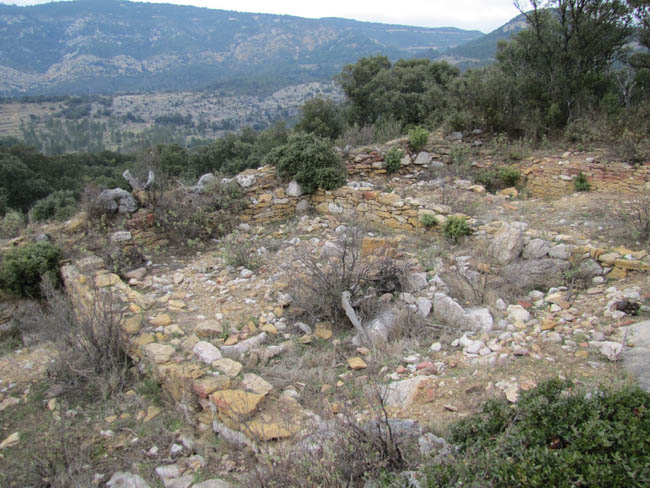The Tinença Natural Park, with an area of 25,814 hectares, extends beyond the strict boundaries of the historic region of Tinença de Benifassà.
Scenically and geomorphologically, La Tinença forms part of the large Puertos de Beceite massif, which is made up of the Aragon, Catalonia and the Comunitat Valenciana Autonomous Communities.
The diversity in the Tinença de Benifassà Natural Park environments is very great, and we can find a great variety of natural habitats declared as of community interest according to the Habitat directive. We can find freshwater habitats, heathlands and temperate scrub, sclerophyllous scrub, herbaceous formations, peat bogs, rocky habitats and finally forests.
A significant part of the area is included in the Caza de los Puertos de Beceite National Reserve, declared in 1966 for the protection of the Iberian Ibex, and extends between the Catalonia, Aragon and Comunitat Valenciana Autonomous Communities.
Both in the Tinença de Benifassà, and in its immediate surroundings, there are some of the most important evergreen oaks in terms of structure and extent in the whole of the Valencian territory. Also, there are some of the best conserved gall oaks in the Valencian Community. These gall oak spaces make up one of the most exuberant landscapes of the Valencian territory. It is also worth noting the presence of considerable boxwood expanses.
The fauna of the park is very abundant and rich in species. There is a large group of birds of prey nesting in the area. We find golden eagles (Aquila chrysaetos), short-toed eagles (Circaetus gallicus), peregrine falcons (Falco peregrinus) and, above all, the griffon vulture (Gyps fulvus).
Although the birds are the most significant animal group in the area, the most represented animal species is the Iberian Ibex (Capra pyrenaica). The common genet (Genetta genetta), European wildcat (Felis silvestris), beech marten (Martes foina), many examples of wild boar (Sus scrofa) or the European roe deer (Capreolus capreolus), are easily visible in this Natural Park.
La Tinença de Benifassá Natural Park was declared as such on 19 May 2006. In this territory are the Sénia and Servo rivers which plough through the last buttresses of the Iberian System. It comprises of the towns of Pobla de Benifassá (Ballestar, Boixar, Coratxá, Fredes), Castell de Cabres, Bel (Rossell) and Vallibona.
Fauna is very abundant and rich in species, such as birds of prey and the Iberian Ibex. In terms of the flora, there are abundant forests of Aleppo pine, black pine and wild pine, evergreen oaks, Valencian oaks and riverside forests. These formations are specially protected and represented in the thirteen floral micro-reserves which we can find in the PORN area giving special protection to threatened and endemic species such as the butterwort (Pinguicula dertosensis) or the sandwort (Arenaria conimbricensis).
Iberian Village of Ballestar
They are the remains of an Iberian village settlement. The site is in Morranda. It can be accessed along the path behind the Church, we find two stone houses with their threshing floors. Following the cobbled path, we see the dry-stone banks and a trail that heads towards the town.
La Tenalla
The Barranco de la Tenalla is a public mountain which surprises the visitor due to its myriad of geographical agents that they can find. Mountains, caves, waterfalls, flora, fauna, etc...
Spaces such as: El Salt de Robert, El Portell de L’Infern, Solá d’en Brull, etc… El Salt de Robert: Waterfall.
El Portell de L’Infern: These are rocky caves that have spectacular views from there. There is a route from Fredes or from the Ulldecona reservoir.
Cave paintings from the Rosegador or Polvori cave
The Cave Paintings from the Rossegadors Cave in La Pobla de Benifassà, can be accessed by the CV105 road next to the Ulldecona reservoir dam. The paintings are located in a rock shelter of 10 meters long by 5 meters high.
The images represent hunters in action, archers, goats, two deer and four big wild boars.
The Levantine cave art was declared as a World Heritage in 1998.
Расположение
La Tinença, which includes the towns of Castell de Cabres, Coratxà, Boixar, Fredes, Ballestar, La Pobla de Benifassà and Bel, owes its name to the Santa María de Banifassà Royal Cistercian Monastery, whose abbot controlled this area in ancient times.








